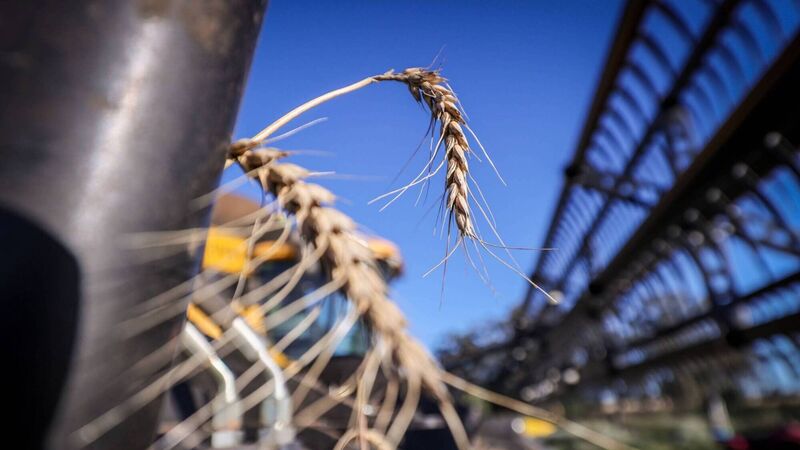Danube River may hold key in fight against food price hikes amid Russian blockade

Overgrown with vegetation, the rusted rail tracks running between Reni in Ukraine’s southwest corner to the port of Galati in Romania had been consigned to Soviet-era history long ago. About a quarter of the 20-kilometre line is missing.
Yet like other relics of the old Eastern Bloc network, the route along the Danube River could eventually play a small part in an increasingly large and complex operation to secure vital food shipments.
European leaders are desperately trying to figure out how to get grain out of Ukraine, whose exports are normally bigger than the entire EU’s.
Russia, accused by the UN of waging war on global food security, last week said it would open maritime corridors to unblock ports such as Odesa on the Black Sea if sanctions against the country were lifted. Ukraine, though, said it was skeptical because of security concerns.
The labyrinthine challenge has politicians looking at everything from naval escorts to shifting whatever’s possible overland to the Baltic.
Officials at ports, logistics companies and in the agriculture industry interviewed across the region say they are scouring maps for solutions like diverting road transport and reviving rail links such as the one connecting Galati.
The task is complicated by a dearth of truck drivers and the fact that the Soviets used a wider track gauge than the European standard.
That has caused up to 30 days of delays at borders for existing routes, the EU has said, as cargo needs to be transferred onto compatible rolling stock and customs infrastructure gets overwhelmed.
Ports in Romania and Poland, meanwhile, are backed up with traffic or already at capacity while there are shortages of specialised personnel to handle the surge in demand. Even with Ukrainian exports at a fraction of what they were, trade officials warn that bottlenecks will get worse as the rest of Europe starts harvesting its wheat next month.
“The scale of the problem is enormous,” Taras Kachka, Ukraine’s deputy minister of economic development, told a conference this month.
“In the last 15 years, we developed our infrastructure in a way that it cannot be simply replaced by another destination, another port.”
Ukraine is a major wheat, corn and barley supplier and tops global sunflower-oil sales. Future crops will undoubtedly shrink due to the war, but it still has 20m tonnes of backlogged grain from last year.
Ukraine is expanding export capacity at its western border and simplifying trade arrangements with the EU. European Commission President Ursula von der Leyen said last week the EU was working to get what’s stuck in Ukraine to global markets by opening “solidarity lanes” to European ports as well as financing different modes of transportation.

Ukraine’s ambassador to Warsaw expects Poland to be the conduit for 80% of Ukrainian grain.
But people on the ground say that’s easier said than done when you look at the map, particularly the rail network.
In Slovakia, the main traffic operator transported 18,000 tonnes of corn from Ukraine last month across 12 trains, and private freight companies are also involved.
The issue is that cargoes from Ukraine’s broad-gauge wagons need to be reloaded onto standard Europe size ones or the container section transferred onto different wheels.
Poland has a 400-kilometre broad-gauge railway linking Ukraine with its industrial southwest region of Silesia. It’s been used mainly for steel products, and in recent weeks to carry refugees.
State railway network operator PLK has started investing in boosting capacity, reversing its earlier focus on connections as far as China via Belarus.
In April, Poland and Ukraine also agreed to create a joint cargo company and simplify border rules. But with routes to Poland’s Baltic ports already busy and a shortage of wagons, there are doubts over whether Poland can boost volumes of Ukrainian grain much above 2m tonnes a month anytime soon.
That compares with the 5m to 6m tonnes typically dispatched monthly via its Black Sea ports, said Roman Slaston, director general of the Ukrainian Agribusiness Club industry group.
The railway line from Reni to Galati via Moldova would be a relatively small piece of the jigsaw, but it illustrates the enormity of the challenge. Bloomberg















